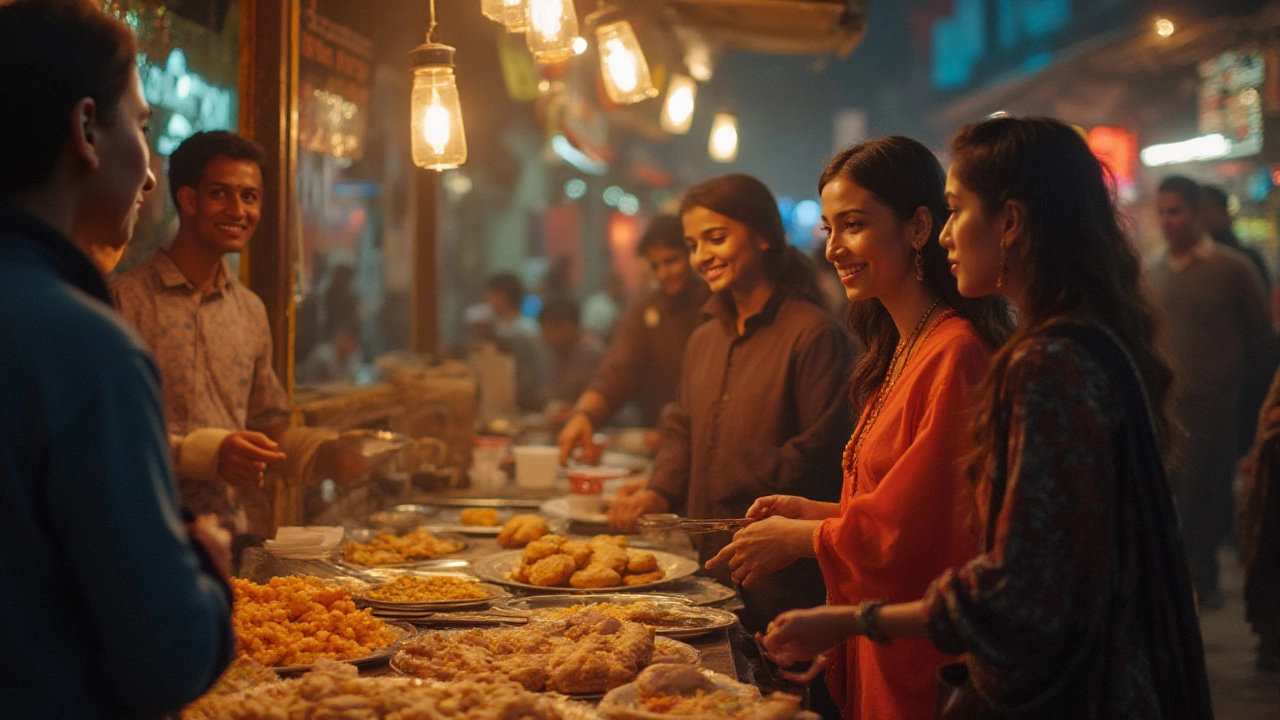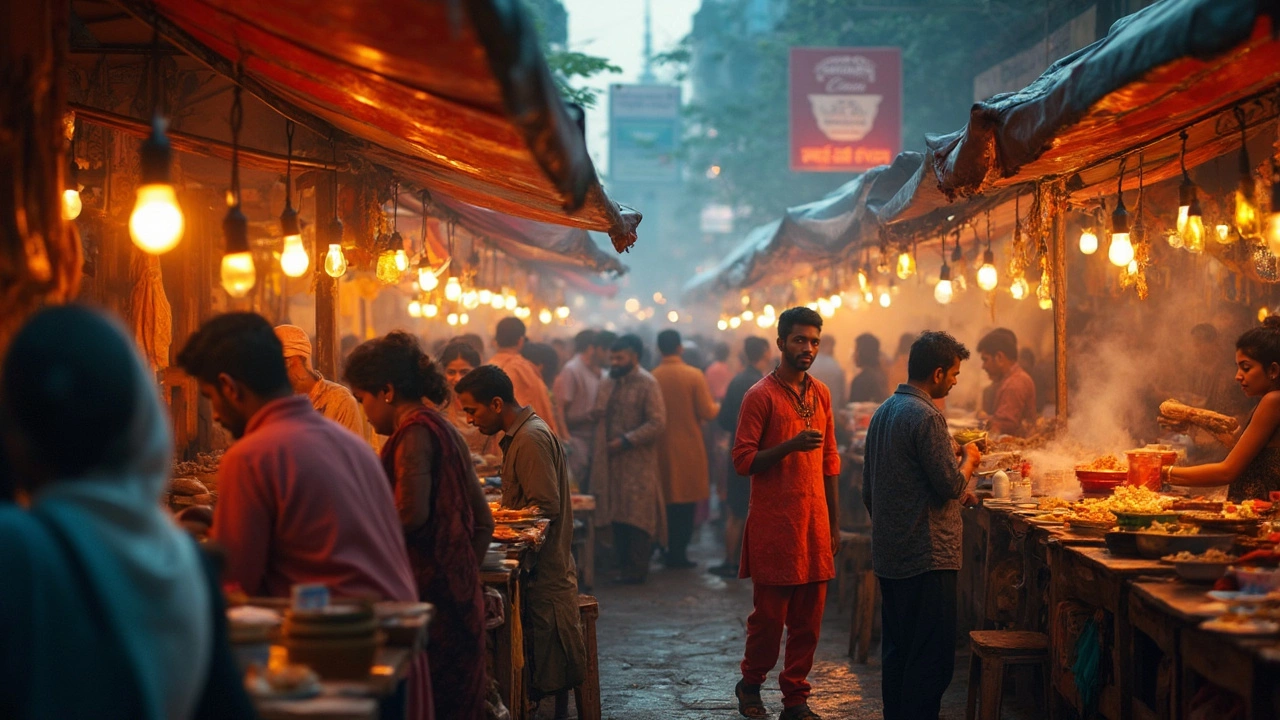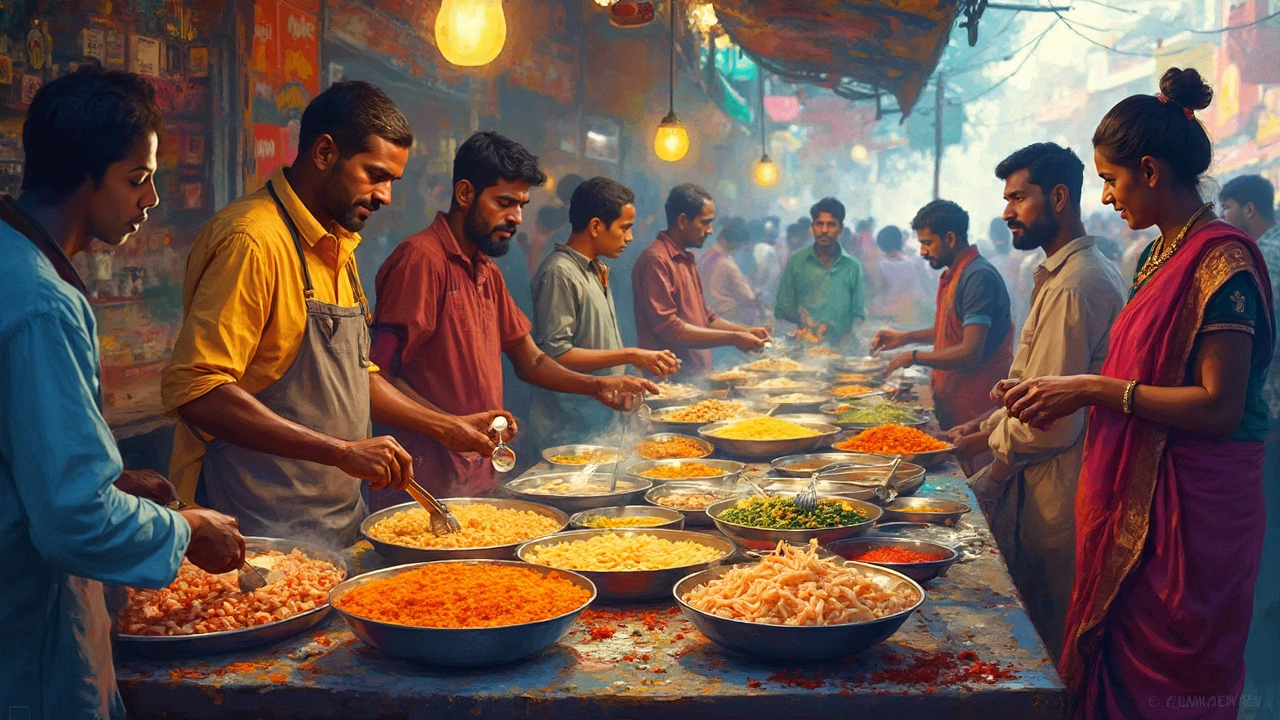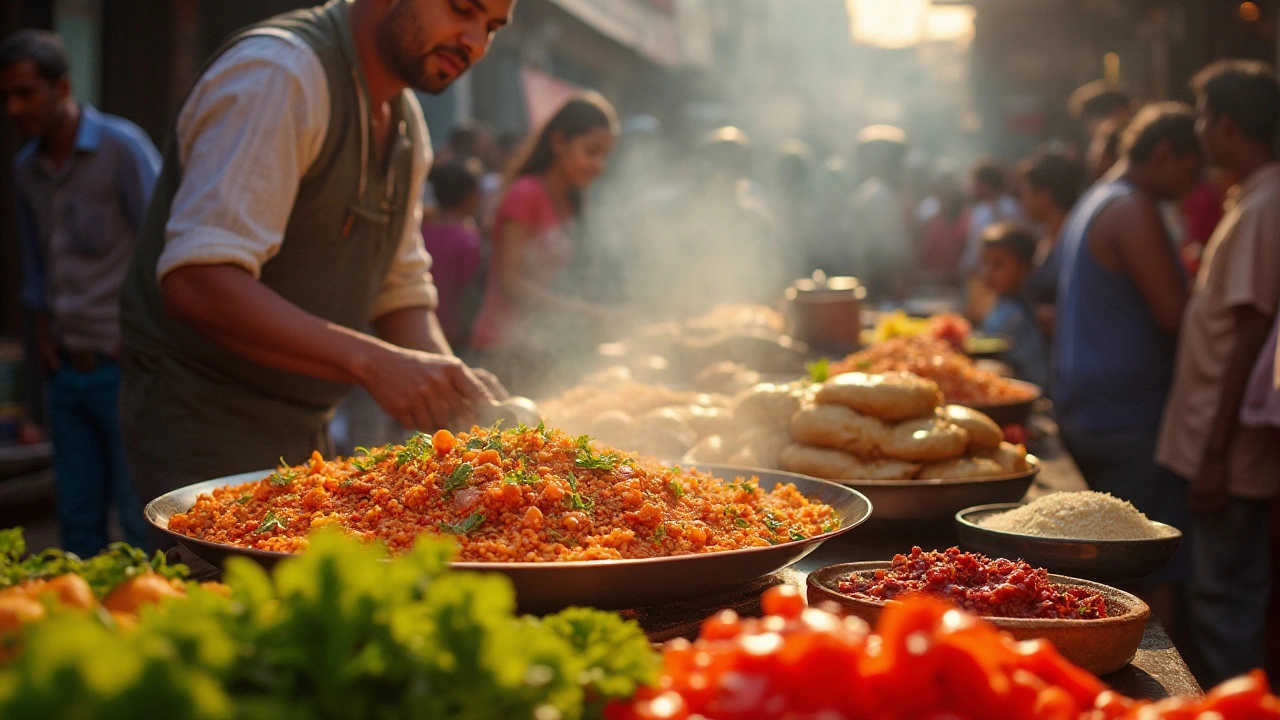Street Food in India: What You Need to Know
When you hear Street Food, the tasty, on‑the‑go meals you find on Indian streets, from spicy chaat to sizzling vada pav. Also known as roadside snacks, it brings together flavors, culture, and quick service in one bustling experience. Food Safety, the set of practices that keep the food clean and your stomach happy is a must‑know because the same bustling stalls that serve the best bites also expose food to dust, heat, and many hands. Understanding safety lets you enjoy the adventure without worrying about a stomach upset.
Flavor, Hands, and Etiquette – The Core Elements
One word you’ll hear a lot is Chaat, a family of tangy, sweet‑and‑spicy snacks that define Indian street cuisine. Chaat isn’t just a dish; it’s a cultural marker that shows how regional twists turn simple ingredients into a flavor explosion. Another hallmark of the scene is the way vendors use their hands, the tactile method of mixing, shaping, and serving food directly. This hands‑on approach adds texture, spreads heat evenly, and lets the cook feel the exact consistency, which many argue enhances taste. Yet, with all that hands‑on action, street food etiquette, the unwritten rules about how to order, share, and respect the stall guides both locals and travelers. Knowing when to line up, how to ask for extra chutney, and how to keep the area clean makes the experience smoother for everyone.
All these pieces—safety, chaat, hand preparation, and etiquette—connect to form the vibrant tapestry of Indian street food. Street Food encompasses diverse regional snacks, requires a solid grasp of food safety, and thrives on the hands‑on skill of vendors. Chaat influences what people crave, while etiquette shapes how you interact with the bustling stalls. Below you’ll discover articles that dive deep into safety tips for tourists, the most‑selling fast foods, language quirks like “tata,” and why vendors prefer using their hands. Whether you’re planning a trip or just love cooking at home, the collection ahead gives you practical insights and tasty ideas to enjoy India’s roadside delights with confidence.

Is Street Food Safe for Tourists in India? Safety Tips & Facts for Food Lovers
Thinking of trying India's legendary street food on your trip? Explore if it’s safe for tourists, what to watch for, and how to eat confidently like a local.

Most Selling Street Fast Food in India: Top Picks You Can't Miss
Curious about India's most selling street fast food? This article digs into the one dish that outshines all others, revealing its origin, what makes it so addictive, and why people keep coming back for more. You'll also learn about regional twists, pro tips for enjoying it safely, and surprising facts that might change the way you order next time. Plus, get ideas for trying it at home. If you're hungry for essential info and fresh insights, you're in the right place.
-
21.06.25 -
Kaia Binari -
0

Does Tata Mean Daddy? Street Food Stories, Language Twists, and Indian Culture
Ever heard the word 'Tata' tossed around while exploring Indian street food stalls and wondered if it means 'daddy'? This article unpacks the curious language mix that happens at food carts, dives into how street vendors use words like 'tata,' and shares how language shapes the food experience. You'll also find some fun facts, cultural tips, and what to say if you want to order like a local. Perfect if you want to understand the words behind the food and avoid a language mix-up.
-
18.06.25 -
Kaia Binari -
0

Street Food in India: What Is It Really Called?
This article breaks down what street food is called in India and why the term 'chaat' pops up so often. It covers the most loved names, quick insights into regional variations, and local food slang. Find out what really counts as street food, why it's a huge part of Indian everyday life, and get some practical tips if you’re planning to try it yourself. If you’re curious about the food culture on Indian roadsides, this piece will clear things up and get your appetite going.
-
24.05.25 -
Kaia Binari -
0

Why Indian Street Food Vendors Prefer Hands
Indian street food stands out not just for its diverse flavors but also for the unique way vendors prepare and serve it using their hands. This article delves into the cultural and practical reasons behind this hands-on approach, exploring its impact on taste, hygiene, and tradition. Discover how this method enhances the culinary experience and why it's deeply rooted in India's rich food heritage.
-
1.03.25 -
Kaia Binari -
0

Street Food Etiquette in India: A Culinary Journey
Exploring India through its vibrant street food culture is an adventure filled with flavors and tradition. Street food in India is not just about the taste but revolves around a deep-seated culture of food etiquette that resonates with the country's diverse traditions. Understanding these unspoken rules can enhance your culinary experience, making it both enjoyable and respectful. From the bustling streets of Mumbai to the quiet lanes of Lucknow, each region offers its own unique take on what and how to eat.
-
22.12.24 -
Kaia Binari -
0
Exploring India’s Iconic Street Junk Food Delights
India's street food scene is a vibrant blend of flavors and cultures, offering an array of tantalizing junk food that captures the heart and taste buds of locals and visitors alike. From Mumbai's vada pav to Delhi's chole bhature, each region boasts its own unique specialties. These savory delights are not just about taste; they also tell stories of tradition and innovation. Discovering Indian street food is a journey through a deliciously diverse culinary landscape.
-
18.12.24 -
Kaia Binari -
0
- Chutney Recipes (14)
- Healthy Living (12)
- General (11)
- Easy Indian Recipes (9)
- Chicken Curry Recipes (9)
- Paneer Recipes (8)
- Healthy Indian Snacks (8)
- Dal Recipes (7)
- Street Food (7)
- Dosa Recipes (7)
-
Red or White Onions in Curry? Which One Works Best for Chicken Curry
15 Oct 2025 -
Why Eating Pulses at Night Might Not Be the Best Idea
12 Apr 2025 -
Chicken Curry Recipe: What Makes a Delicious Curry?
1 Jun 2025 -
What Kind of Milk Do They Drink in India? Popular Choices Explained
9 May 2025 -
Healthiest Junk Food in India: What Tops the List?
14 May 2025
9.07.25
Kaia Binari
0